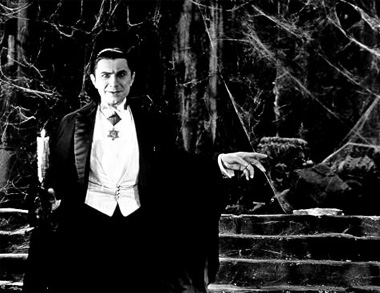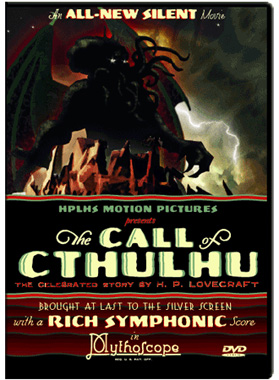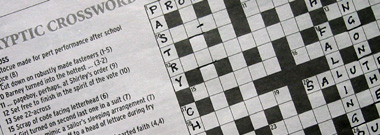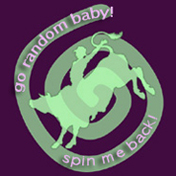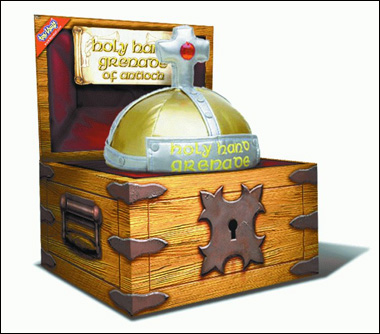
Now, I have to confess that there are no giant rabbits in Australia and I actually made up some things in that last post. Yeah, yeah, I know, hard to believe that I would just make something up but there ya go. Normally I would not feel the need for such a disclaimer, but in this post I am going to tell you about something almost as bizarre and yet it is entirely true.
Both jedimacfan and Joe Fuel were of a mind as to how Australia’s rabbit problems could be addressed, and indeed, their suggestions are not far off the mark. Let me tell you about the rabbit control program that we had in place at Treehouse.
First of all, you need to erase from your mind the image of the fluffy cottontail Watership Down hippity-hoppity bunny. Those are not rabbits – they are the cutesy concoctions of evil minds who lived in some place where the rabbit has natural predators. Not Australia.
As I intimated in the last post, what Australia means to the rabbit can be summed up in one word: smorgasbord (well, I don’t know if rabbits understand Swedish, but whatever the rabbit equivalent to that is. Probably “ee–eeee–e-eee-ee”).
Some statistics:
Rabbits breed awful fast, and have a lot of baby rabbits. Gestation period for a rabbit is 30 days and they typically have between 5 to 8 kittens. They reproduce for about nine months out of every year. That’s about 40 new rabbits every year. One single rabbit can deplete an entire hectare of Australian native vegetation in the course of its natural grazing habit. And Australian native plants are not just tasty to rabbits, they are gourmet yummy treat delights. Rabbits will eat native flora in preference to just about anything else. This is devastating to the vegetation, but also debilitating for native animals and birds which depend on that habitat. One eighth of all mammalian species that once lived on the Australian continent are extinct due to rabbits. I was not able to find figures for native ground-dwelling birds, but you could probably assume a similar number.
Rabbits in Australia have virtually no predators. There are introduced foxes, but the foxes prefer to eat the native wildlife because, well, before foxes there were no predators and so everyone was a little relaxed with the ‘run-away’ response. Eagles eat some rabbits, as do snakes, but all-in-all, it’s Rabbit Côte d’Azur.
Well, except for the myxo and the calicivirus, two biological control methods that have been released with varying and unexpected effects.
So, say the Côte d’Azur with bird flu.
When one becomes a landowner in Australia, as I did with my 25 acres of bush around the Treehouse, one is legally obliged to deal with the rabbit problem that comes as an added bonus with that land. On flat outback farms, this is a relatively simple matter – you get the tractor and plough the burrows (containing bunnies) under. Done. Or, in difficult areas, you chuck in a couple of sticks of dynamite and kablooey! Goodbye Flopsy, Mopsy and Cottontail.
Treehouse was in the Kanimbla Valley, however, a genteel allotment of ‘lifestyle’ acres and hobby farms. Sort of suburbia with neighbours too far away for their hi-fis to annoy you. Very hilly and rocky, so not good for ploughing, and a little crowded for dynamiting.*
So there are a number of other rabbit eradication measures available: poisoning by phostoxin and 1080; shooting, trapping and ferrets. Aside from the poisoning, which is pretty ugly, we tried all the others. None were as effective as…
The Rid-A-Rabbit.
Here’s how it works: you have a cannister of LPG which you lump around to the burrows. The LPG sublimes into a white heavier-than-air vapour when it comes out of compression, and you let some of that flow down into the burrow. It will automatically find the lowest point underground. You put in just a small amount of gas – you don’t want the burrow full of gas because you need oxygen in there too (yep, I can see that the Fuels and Jedimacfan have raced well ahead here).
Then, a second person places what is essentially a fancy oven-lighter on a very long extension cord in the mouth of the burrow. Then everyone runs like hell to get as far away as possible, and the person with the oven-lighter fires the switch.
One of two things generally happens:
A: Nothing. The gas/air mixture is not right.
B: There is an earth shaking kaboom, flashes erupt out of every burrow entrance attached to that hutch (rabbits are canny enough to realise that several doors are better than one, especially when it comes to ferrets), and the sound echoes impressively across the valley (which alerts all your neighbours that you are being virtuous and they should be doing the same).â€
Oh, a third thing that sometimes happens is that callous unfeeling Rid-A-Rabbit operators feel the need to start singing “Bright Eyes, burning like fire…“
*Although I was tempted, on occasion, to think about lobbing a stick or two down into the place below me which was owned by some halfwit who, for reasons known only to himself, felt compelled to light up his driveway with airport runway lights at night.
†I know this sounds cruel, but of all the methods available, it is actually the most humane. The rabbits die of instant concussion and/or asphyxiation; all the oxygen in the burrow is instantaneously consumed by rapid combustion. I’m not saying it is pleasant, just better than dying of phostoxin poisoning, which is essentially slow painful death by a form of mustard gas. The Geneva Convention would appear to agree with me: many countries are allowed to have weapons that use the ‘Instant Air Evacuation’ or ‘thermobaric’ principle in their armoury, but chemical weapons such as mustard gas are illegal. That’s People-Testing for animals. You can read about Fuel/Air explosions in warfare here if you have a strong stomach.

